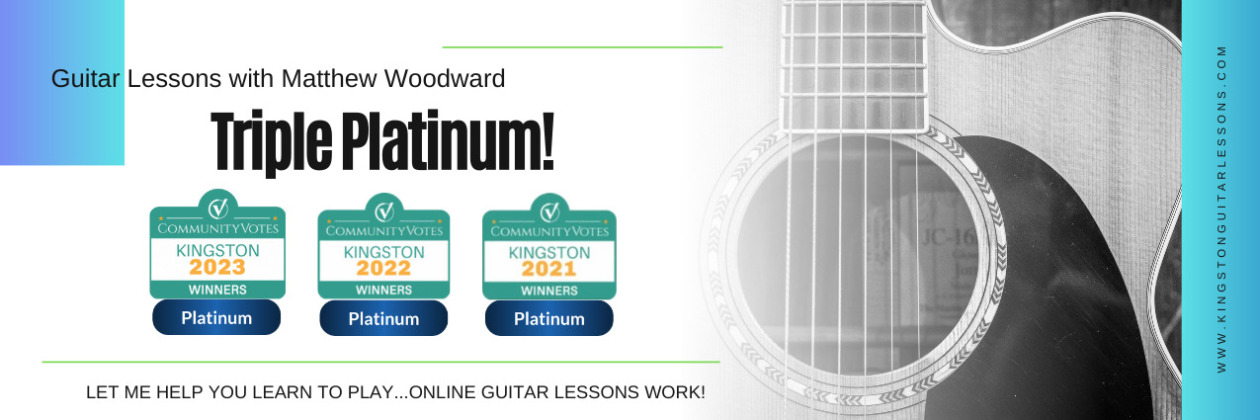What we generally refer to as “lead” guitar, or soloing, is when a guitarist builds melodies using single notes played one at a time in succession, rather than using chords. Whether or not the player is aware of it, the source of these notes will be a scale comprised of the batch of notes that the player feels is most suitable to the chord progression they are playing “over”, according to their own personal taste as to what sounds “right”.
It’s useful to think of how different people speak in order to understand the choices players make in various situations. Each note one plays can be thought of as a single word. Words can be used to build sentences (melodies), sentences to build paragraphs (entire solos), and so on. What a player chooses to say in any given musical situation will usually reflect their familiarity with that situation, their previous experience with other similar situations, or their complete lack of understanding of what is going on musically.
Each musical style has its own dialect, and some words, although they can be found in the dictionary, may be inappropriate for a particular style. Playing jazz licks in a hard rock tune might sound awkward, even if those jazz licks make sense in another song where that level of sophistication is called for. That said, it’s still fine to “mash-up” differing genres, as long as some thought has gone into how to go about it. Finding the right words to say at the right time is the goal of every lead guitarist.
The melodic choices that a player makes will reflect their level of experience and education, in other words, their musical vocabulary. That being said, it doesn’t necessarily follow that a lead player must have an extensive vocabulary in order to be considered good, if they play what they do know well. There are no clear-cut rules as to how to craft a “good” solo. Extremely sloppy solos have been considered legendary, despite their flaws, due to the feeling and emotion that went into the performance. Many well thought-out and technically mind-boggling solos have proven to be just plain boring!
Many players improvise their solos, allowing the notes to flow from their fingers in a stream-of-consciousness sort of fashion. They never play the same thing twice. Others are uncomfortable doing this, and prefer to carefully compose the melody of a solo beforehand. Either approach can work for the soloist as they try to create an interesting musical interlude that both supports and enhances the song. And THAT’S an important thing to always consider – does that great solo you just played actually improve the song?
Many things are involved in the production of the final sounds we hear within a solo, and the mood they are meant to create. One can “speak” with a clean tone, or with a distorted voice. Studio “session players” are often musical chameleons, carrying an arsenal of different guitars, amps and effects in the hope of providing a producer with whatever sounds they may be after. There is almost an infinite number of guitar and amp choices available to modern electric players, even before considering electronic processors such as effects pedals. Finding your sound – the combination that speaks to you is extremely important. You want to be inspired to play.
A trap that many guitarists fall into has to do with the physical layout of the notes we play on the fretboard. Since every scale can be found in some form of recognizable fingering pattern, players will often wander up and down through a pattern (or “box” as they are sometimes called) without really having an idea of what they want to say – they let the pattern they are playing in shape the music they make. It’s rather like forming a sentence by picking words at random from a dictionary.
We have all known people that talk and talk endlessly, never seeming to make a point – they ramble on. Other folks are able to sum up complicated ideas with a few simple, memorable words. They only speak when they have something worth saying. A player’s personality is often indicated by the manner in which they take a solo. Groups of musicians can also be thought of as being engaged in conversation – sometimes everyone is talking loudly all at once, sometimes folks respectfully listen, quietly support or add constructively to what the others have to say.
Good lead players try to form distinct, stand-alone melodies, and they choose their notes with care. The best lead players give their listeners something accessible, often singable, and definitely memorable. People leave the show humming the solos they played.
Aim for that.
Remember: Just because you can yodel doesn’t mean you should always be yodeling.
Let that be a lesson to you. ![]()
© 2014 Matthew Woodward










